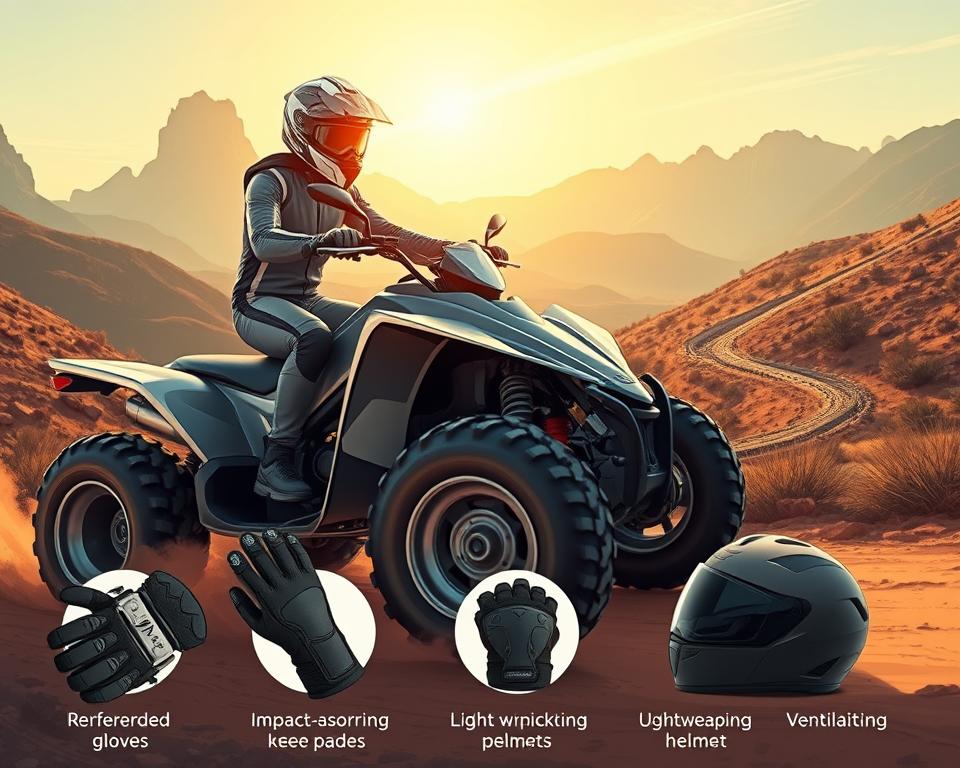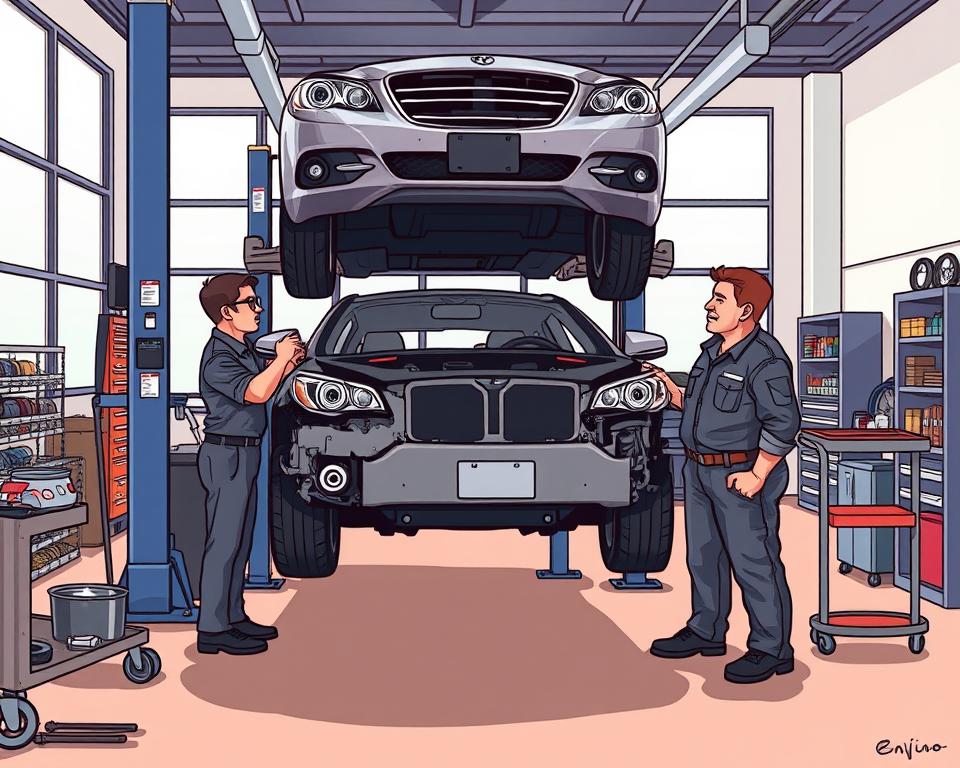Steering Clear of ATV/UTV Gearing Errors for Novices
Have you heard that nearly 30% of new ATV and UTV owners face gear selection issues within their first year? Such data emphasizes how critical gear ratios are for novice riders. Correct gear choice protects against accidents as well as enhances power. Let’s dive into gearing missteps, care routines, and top Can Am x3 windshield glass tips to enhance your rides.
Summary Highlights

- Knowing gear ratios is crucial for peak off-road power.
- Common gearing oversights can lead to safety risks on the trails.
- Regular maintenance is key to preventing UTV transmission issues.
- Choosing the right gear boosts trail enjoyment.
- Implementing ATV maintenance tips can prolong vehicle lifespan.
Understanding ATV and UTV Gear Ratios
Ratios determine how engine output translates to drive force. They govern both top speed and hauling capacity. That impacts hill climbs and tow capabilities. Different gear ratios can transform a vehicle’s performance, making it better suited for racing, off-road driving, or towing.
Selecting proper gears unlocks engine potential. Excessively low gearing reduces hill-climbing pull. On the other hand, a high gear ratio can slow down acceleration, making it tough to speed up on straight paths.
Many enthusiasts use gear reduction to enhance handling and adaptability across different terrains. By adjusting gear ratios, riders can customize their vehicle’s performance. It perfectly aligns performance with your riding style. Optimal ratios deliver smoother use and better MPG.
Common Gearing Oversights for New ATV/UTV Owners
Proper gear choice underpins both power and protection. Rookies often miss key selection factors. Knowing what happens when you misgear and how to fix it transforms your experience. Plus, it prevents mechanical setbacks.
Impact of Incorrect Gear Selection
Choosing the wrong gear can lead to serious problems, including loss of control and mechanical failures. Incorrect ratios reduce pulling power, hamper braking, and grind parts. These mishaps compromise safety for all on and off board. Using maintenance best practices wards off these hazards.
Choosing the Right Gear for Terrain
Different terrains need different gearing for efficient performance. Climbing requires low-end grunt from smaller ratios. Flats call for taller ratios to boost top-end. Soft ground demands careful gear choice for grip. Understanding trail types secures fun and safety.
The Importance of Proper ATV Maintenance
Scheduled service avoids surprises on the trail. Following ATV maintenance tips helps avoid unexpected breakdowns and boosts safety. A tailored service plan prioritizes drivetrain care.
Regular Inspection and Maintenance
A detailed inspection checklist is essential for spotting issues early. It’s important to check gears, brakes, tires, and belts regularly. Routine checks lead to peak performance. Here are some critical inspection points to remember:
- Examine gear alignment and wear.
- Verify hardware and linkages are secure.
- Check master cylinder and calipers for leaks.
- Verify tire PSI and rubber life.
- Check wiring and connectors for rust.
Fluid Changes and Gear Health
Fresh oils ensure the gearbox stays healthy. Routine fluid swaps avoid sludge and varnish. Fresh oil cuts wear and heat for lasting components. Adopting this routine preserves drivetrain health and trail readiness.
| Fluid Type | Recommended Change Interval | Benefits of Regular Change |
|---|---|---|
| Motor Oil | 50–100 operating hours | Cuts friction and boosts power |
| Differential Oil | Every 100-200 hours | Improves shifting, minimizes gear damage |
| Coolant | Once per year | Prevents overheating, maintains optimal temperature |
By following these guidelines, enthusiasts can enjoy their rides without worrying about mechanical failures. This makes every journey more enjoyable.
Common ATV Gear Shifting Problems
Rookie riders struggle with smooth shifts. Learning silky shift methods transforms your ride. You avoid jerky starts and stops. Timing throttle and clutch releases prevents gears from crunching.
Learning to Shift Smoothly
Honing silky shift skills takes deliberate training. Begin by listening to your motor’s cadence. Careful engagement protects internals and stops wear. Matching revs while you let out the clutch is essential.
Practice shifting in a controlled setting until you’re confident. Apply minimal throttle for smooth transitions.
Recognizing Signs of Gear Issues
Spotting problems early prevents breakdowns. Be alert for clicks, clunks, or grinds when shifting. Difficulty shifting can also signal problems that need quick attention. Fixing problems fast keeps you safer on the trail. Resolving shift issues preserves power delivery and morale.
Understanding UTV Transmission Issues
Transmission headaches are common; understanding them aids fixes. Typical troubles involve gears that slip and grinding sounds. This section delves into these frequent problems and offers a detailed approach to diagnose and fix them. It’s based on a practical UTV troubleshooting guide.
Diagnosing Common Problems
Identifying symptoms early prevents bigger issues. Common issues include:
- Unexpected gear drops that compromise handling.
- Unusual sounds, such as grinding or whining, indicating mechanical damage.
- Drips or puddles under the UTV may foretell failures.
Scheduled inspections catch problems fast. You can then address issues swiftly. Missing early clues damages your ride and wallet.
Solutions for Troubleshooting UTV Transmissions
Solving drivetrain faults depends on a structured routine. Follow these steps for effective troubleshooting:
- Verify oil levels and refill as needed.
- Look for wet spots beneath the transmission.
- Open housing to check bearings and gears.
- Test drive the UTV at various speeds to monitor gear engagement and responsiveness.
- Reference factory troubleshooting charts for your UTV.
Using a reliable UTV troubleshooting guide can streamline the process. Grasping drivetrain theory helps maintain your rig. It greatly enhances your vehicle’s longevity and efficiency.
ATV Clutch Adjustments and Their Benefits
Right clutch settings smooth out gear changes. Incorrect adjustments can make shifting gears tough, frustrating for beginners. Frequent tuning enhances clutch grip and shift precision.
Fine-tuning clutch engagement matters. Correctly calibrated clutches enable flawless transitions. This enhances the ATV’s power delivery, making rides more enjoyable on different terrains.
Neglecting clutch upkeep accelerates wear and reduces power. Proper maintenance leads to smoother shifts and better engine response. It’s critical for both new and seasoned riders to ensure their ATV performs at its best.
Mastering the Art of Gear Shifting
Becoming adept at shifts transforms your off-road sessions. You need mechanical insight and precise timing to nail each shift. Novices must learn shift cadence. Consistent timing makes shifts effortless and more efficient.
Smooth shifts arise from varied-condition training. Knowing shift points for hills, flats, and mud secures handling. For instance, shifting down when approaching a steep hill helps maintain power and stability.
- Rehearse clicks slowly to gain control.
- Observe how your vehicle responds to different shifts.
- Gradually incorporate more challenging terrains to test your skills.
Tuning into your ATV’s feedback is key to shift mastery. Pay attention to engine sounds and vibrations. Such feedback tells you when to execute transitions. Such intuitive understanding leads to proficient gear shifting, making your ride more enjoyable.
Best Practices for UTV Gear Selector Problems
Resolving gear lever faults requires regular inspection and testing. Routine linkage reviews catch wear promptly. Perfecting selector methods wards off glitches. Inspect link rods and fluid status as part of every service.
At the first sign of trouble, clear debris from the shifter. Clunks or rattles can signal a loose linkage. Minor tweaks typically fix selector snags. An organized maintenance schedule helps manage wear and tear.
Tracking shift quality across terrains isolates faults. Following these methods preserves selector health and rider trust.
Tips for Enhancing Gear Performance
Achieving top drivetrain function demands regular attention. Scheduled upkeep enhances ATV efficiency. Monitor fluids, look for damage, and fine-tune as required. A simple inspection can prevent extensive damage and costly repairs.
Choosing the right gear ratios is essential for maximizing engine response and achieving a smoother ride. Assessing ground conditions guides your ratio picks. It influences your launch and maximum velocity. Consulting reputable brands like American Off-Roads, which offer aftermarket modifications, can help with UTV performance enhancements.
Utilizing gear performance tips focused on tire selection, suspension adjustments, and weight distribution can further improve overall gear efficiency. These tweaks guarantee superior handling in rough conditions. Your rides become more fun and less fatiguing. Implementing these strategies will allow riders to navigate with confidence while enjoying the thrill of the ride.
To Conclude
Getting your gears right is the key to speed and security. Knowing how to choose the right gear for different terrains greatly improves your ride. By avoiding common mistakes and making smart choices, your off-road trips will be both fun and secure.
The importance of performance maintenance cannot be overstated. Scheduled maintenance and TLC save you from breakdowns and prolong service. Proper care boosts efficiency and keeps you safe in diverse environments.
Understanding gear selection and prioritizing maintenance leads to a more fulfilling experience for ATV/UTV fans. Adopting these practices ensures many memorable rides and adventures in the future.
FAQ
Common ratio ranges for ATVs/UTVs?
Gear ratios span a broad spectrum across makes and models. They usually range from 3:1 to 5:1. Lower ratios are better for off-road conditions, providing more torque. Taller ratios boost runway speed on level ground.
How can I determine if I’m using the wrong gear for my terrain?
Misgearing risks unstable handling, rev overload, or sluggish starts. Each terrain type—mud, sand, rock, or snow—requires specific gear selection for optimal performance.
Warning signs for upkeep on your off-road vehicle?
Pay attention to hard shifts, strange sounds, leaky fluid, or waning torque. Regular checks of the gear system can prevent major issues.
How often should I change the fluids in my ATV/UTV gear system?
Rotate your oils at 1.5–2.5K miles or yearly, based on how and where you ride. Clean fluids ensure efficient gear operation and extend drivetrain life.
What techniques should I use for smooth gear shifting?
For smooth gear shifting, practice coordinating the throttle and clutch. Ease out the clutch as you roll on the throttle to align RPM and road speed.
How can I troubleshoot UTV transmission issues?
Start by checking for common problems like slipping gears or strange noises. Verify oil clarity and fill. Next, test-drive at varied speeds to see how it shifts.
What is the importance of clutch adjustments in an ATV?
Proper clutch adjustments are essential for smooth gear transitions. Bad clutch alignment wears out parts prematurely and hinders shifts.
Optimizing gears for varied ground?
Experiment with various gear ratios and consider aftermarket modifications from reputable brands like American Off-Roads. Scheduled service—linkage grease and oil changes—maintains top output.
Addressing a bad gear selector?
Frequent checks and service stops selector snags. When the shifter binds, use the OEM troubleshooting procedures to find the root cause.
Rookie gearing errors to dodge?
Rookies tend to ignore ratio basics, delay upkeep, or misgear for mud, rock, or hills. These oversights can lead to inefficient operation and safety concerns.


